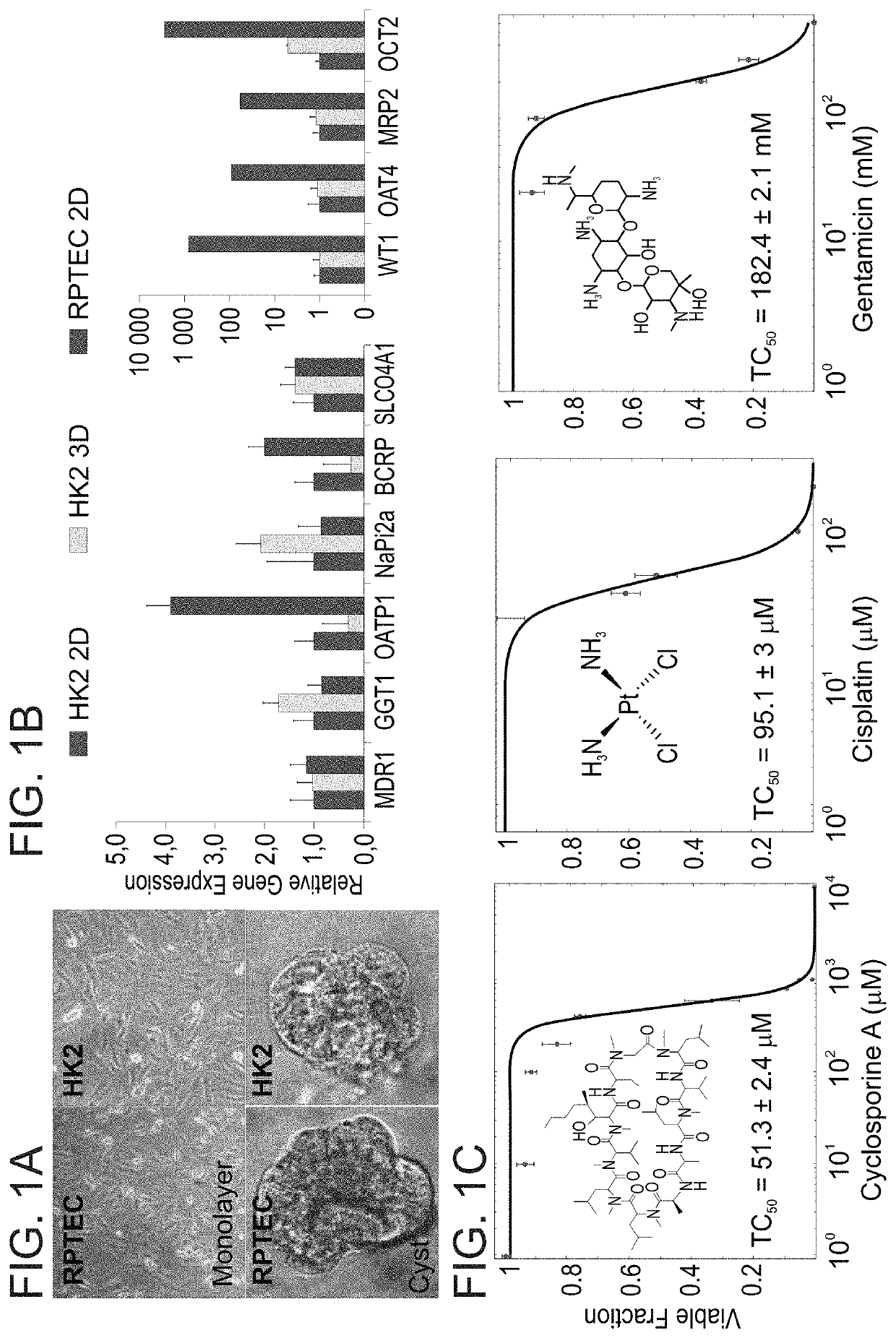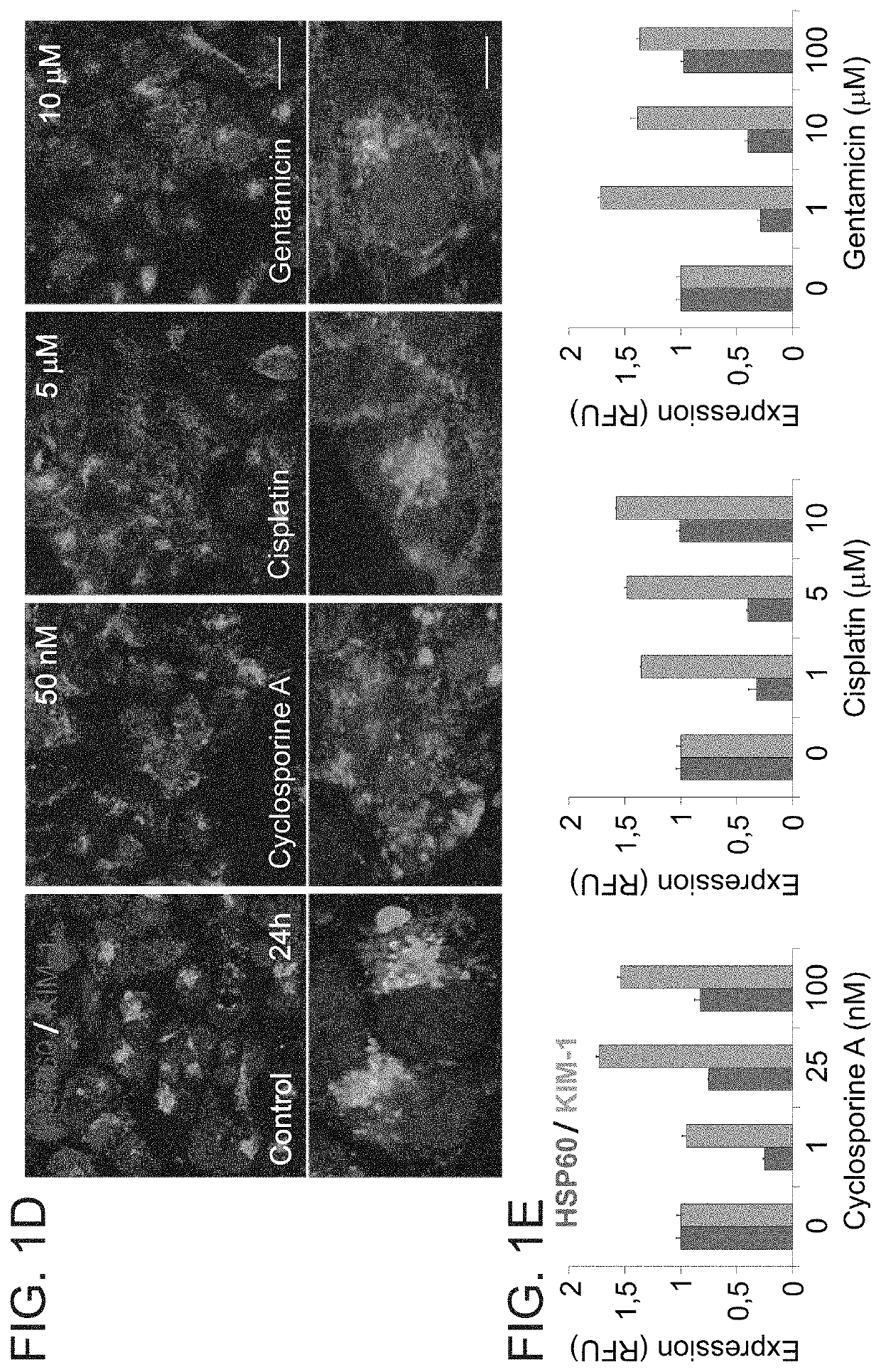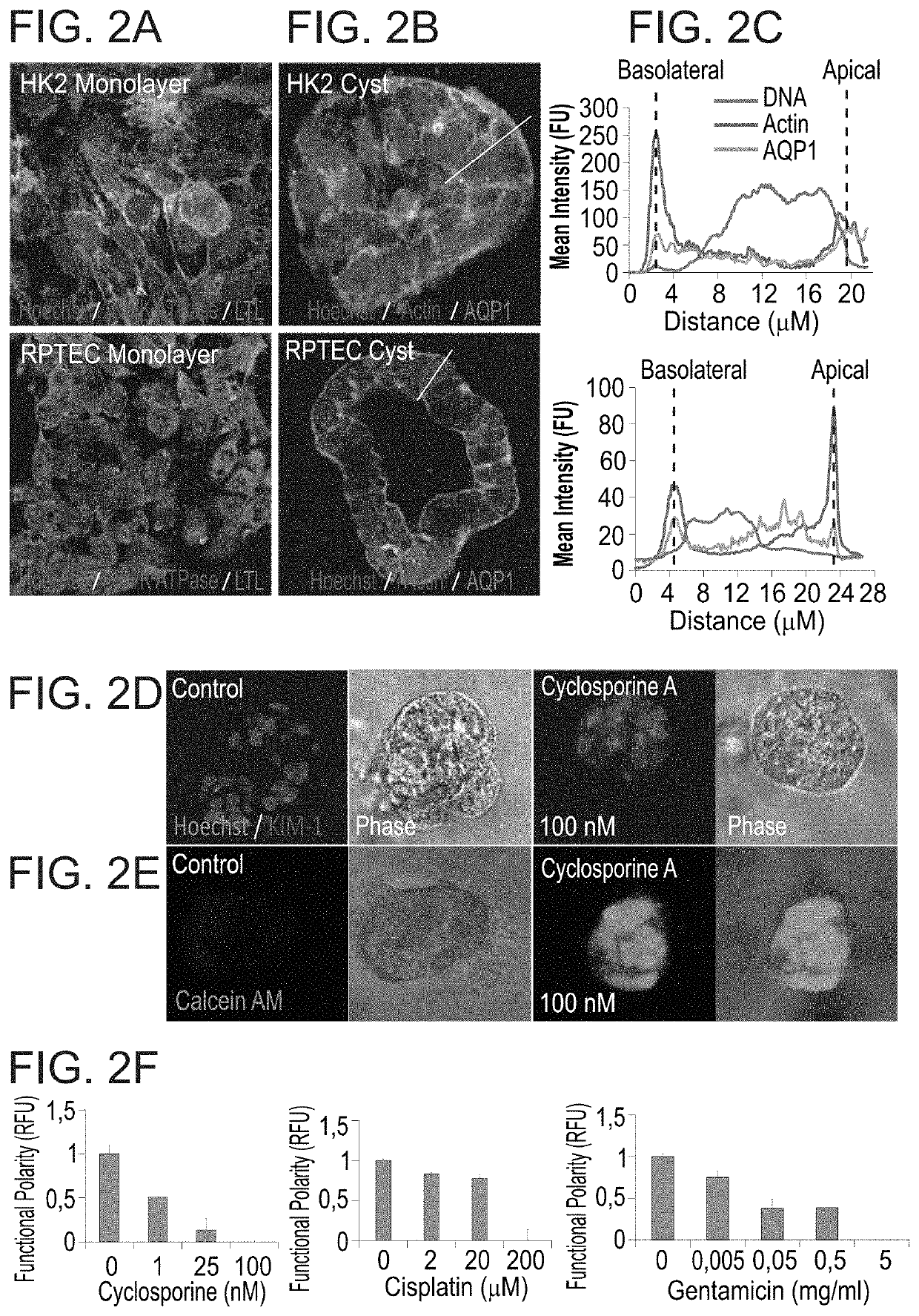Method for reducing drug-induced nephrotoxicity
a nephrotoxicity and drug technology, applied in the field of reducing drug-induced nephrotoxicity, can solve the problems of high incidence of nephrotoxicity, multiple interventions and hospitalization, and eventual development of chronic renal failure, and achieve the effect of reducing renal tissue toxicity
- Summary
- Abstract
- Description
- Claims
- Application Information
AI Technical Summary
Benefits of technology
Problems solved by technology
Method used
Image
Examples
example 1
Organ-On-Chip Analysis of Kidney Metabolism Reveals Glucose-Driven Lipotoxicity as a Mechanism of Drug-Induced Nephrotoxicity
[0344]Materials and Methods
[0345]Cell Culture
[0346]All cells were cultured under standard conditions in a humidified incubator at 37° C., under 5% CO2. HK-2 cells were cultured in Dulbecco's Modified Eagle Medium / Nutrient Mixture F-12 basal medium (DMEM / F-12, Sigma, USA) supplemented with 10% fetal bovine serum (BI, Israel), 5 ng ml−1 Epithelial Growth Factor (EGF, Peprotech, USA), L-Alanyl-L-Glutamine (BI, Israel), 100 U ml−1 penicillin, and 100 μg ml−1 streptomycin (BI, Israel).
[0347]Renal Proximal Tubule Epithelial Cells (RPTEC) were purchased from Lonza (Basel, Switzerland). Cells were cultured in MCDB 153 basal medium (Sigma-Aldrich, USA) supplemented with 0.5% fetal bovine serum (BI, Israel), Insulin, transferrin and selenium (ITS, Gibco, USA), 0.1 μM dexamethasone (Sigma-Aldrich, USA), 10 ng ml−1 Epithelial Growth Factor (EGF, Peprotech, USA), 5 pM Trii...
example 2
Clinical Evidence Validates Kidney-On-Chip Mechanism of Drug-Induced Nephrotoxicity
[0396]As shown in Example 1, Cyclosporine A, Cisplatin and gentamicin promote early acute injury in hPTC, leading to a rapid loss of functional polarity (even below concentrations under the threshold of cellular damage). Under such conditions, polarized proximal tubules uptake more glucose to sustain glycolysis, but are unable to transport it out and therefore cannot maintain proper glucose homeostasis. Over the first 48 hours of induction, proximal tubule cells shift their metabolism towards lipogenesis leading to significant fat accumulation and lipotoxicity similar to hepatic steatosis.
[0397]Histology of human kidneys from patients under treatment with either cyclosporine A or Cisplatin show evidence of vacuolopathy in the proximal tubules which are reminiscent of lipid droplets (FIG. 10F). This clinical signs of drug-induced lipotoxicity in the proximal tubules in human patients add relevance to t...
PUM
| Property | Measurement | Unit |
|---|---|---|
| Molar density | aaaaa | aaaaa |
| Time | aaaaa | aaaaa |
| Molar density | aaaaa | aaaaa |
Abstract
Description
Claims
Application Information
 Login to View More
Login to View More - R&D
- Intellectual Property
- Life Sciences
- Materials
- Tech Scout
- Unparalleled Data Quality
- Higher Quality Content
- 60% Fewer Hallucinations
Browse by: Latest US Patents, China's latest patents, Technical Efficacy Thesaurus, Application Domain, Technology Topic, Popular Technical Reports.
© 2025 PatSnap. All rights reserved.Legal|Privacy policy|Modern Slavery Act Transparency Statement|Sitemap|About US| Contact US: help@patsnap.com



